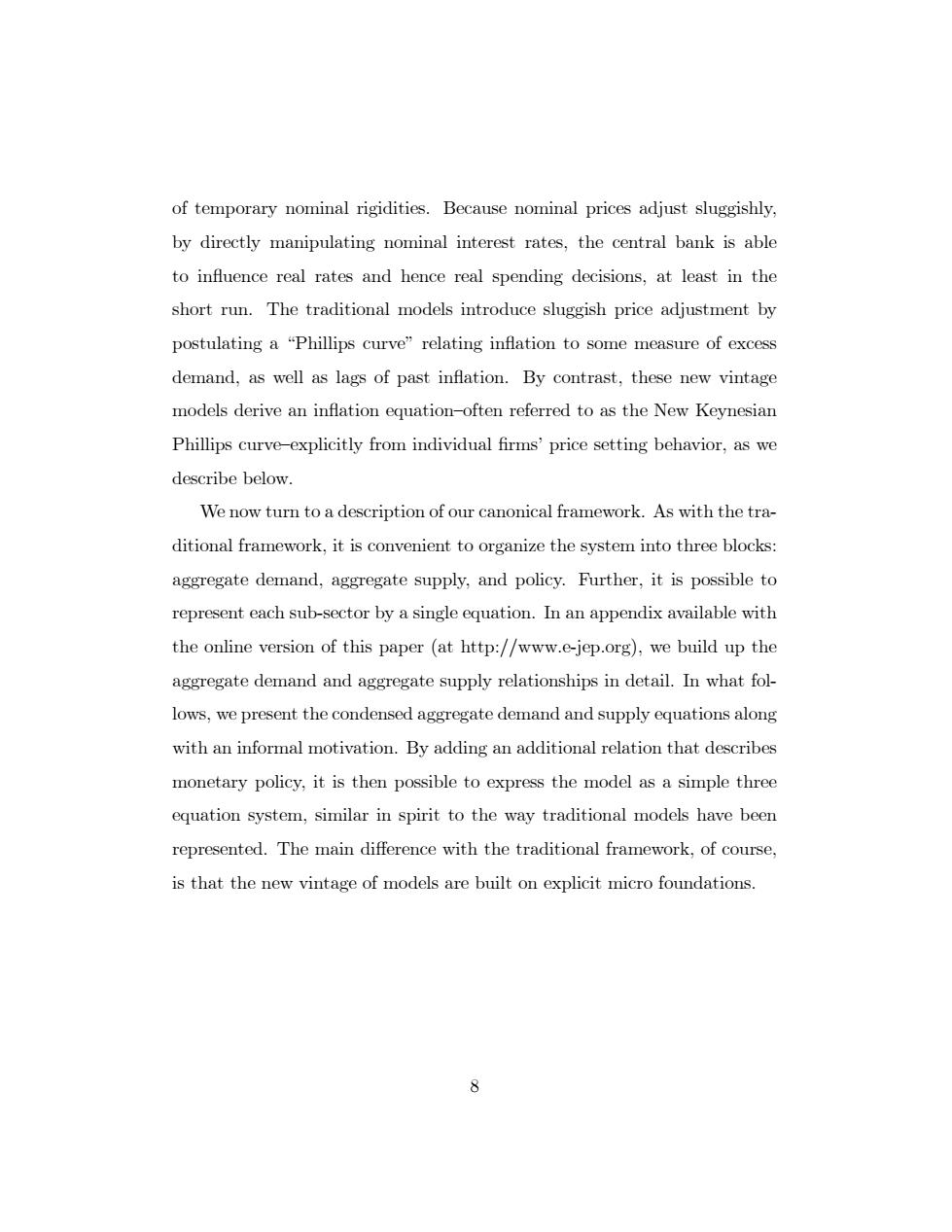正在加载图片...

of temporary nominal rigidities.Because nominal prices adjust sluggishly, by directly manipulating nominal interest rates,the central bank is able to influence real rates and hence real spending decisions,at least in the short run.The traditional models introduce sluggish price adjustment by postulating a "Phillips curve"relating inflation to some measure of excess demand,as well as lags of past inflation.By contrast,these new vintage models derive an inflation equation-often referred to as the New Keynesian Phillips curve-explicitly from individual firms'price setting behavior,as we describe below. We now turn to a description of our canonical framework.As with the tra- ditional framework,it is convenient to organize the system into three blocks: aggregate demand,aggregate supply,and policy.Further,it is possible to represent each sub-sector by a single equation.In an appendix available with the online version of this paper(at http://www.e-jep.org),we build up the aggregate demand and aggregate supply relationships in detail.In what fol- lows,we present the condensed aggregate demand and supply equations along with an informal motivation.By adding an additional relation that describes monetary policy,it is then possible to express the model as a simple three equation system,similar in spirit to the way traditional models have been represented.The main difference with the traditional framework,of course, is that the new vintage of models are built on explicit micro foundations. 8of temporary nominal rigidities. Because nominal prices adjust sluggishly, by directly manipulating nominal interest rates, the central bank is able to ináuence real rates and hence real spending decisions, at least in the short run. The traditional models introduce sluggish price adjustment by postulating a ìPhillips curveî relating ináation to some measure of excess demand, as well as lags of past ináation. By contrast, these new vintage models derive an ináation equationñoften referred to as the New Keynesian Phillips curveñexplicitly from individual Örmsíprice setting behavior, as we describe below. We now turn to a description of our canonical framework. As with the traditional framework, it is convenient to organize the system into three blocks: aggregate demand, aggregate supply, and policy. Further, it is possible to represent each sub-sector by a single equation. In an appendix available with the online version of this paper (at http://www.e-jep.org), we build up the aggregate demand and aggregate supply relationships in detail. In what follows, we present the condensed aggregate demand and supply equations along with an informal motivation. By adding an additional relation that describes monetary policy, it is then possible to express the model as a simple three equation system, similar in spirit to the way traditional models have been represented. The main di§erence with the traditional framework, of course, is that the new vintage of models are built on explicit micro foundations. 8